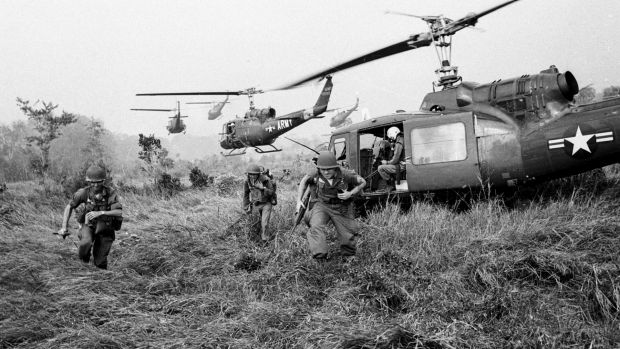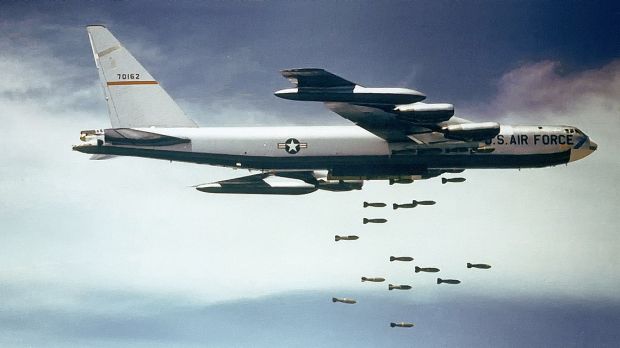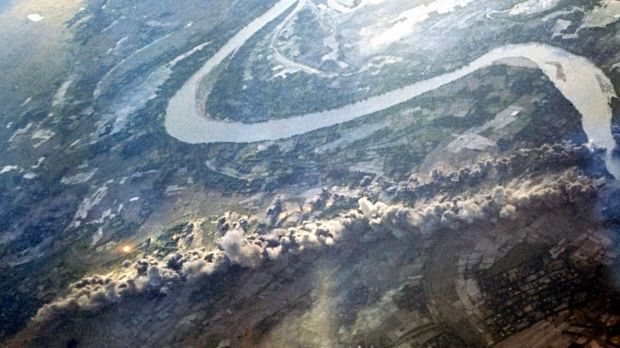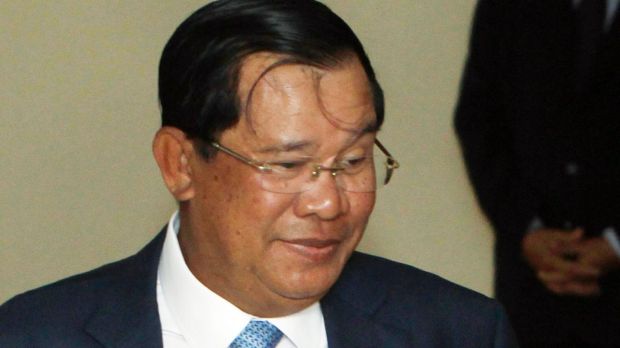Paying for Imperialism? Fury in Cambodia as US Asks to Be Paid Back Hundreds of Millions in War Debts
IN FOCUS, 13 Mar 2017
11 Mar 2017 – Half a century after United States B-52 bombers dropped more than 500,000 tonnes of explosives on Cambodia’s countryside Washington wants the country to repay a $US500 million ($662 million) war debt.
The demand has prompted expressions of indignation and outrage from Cambodia’s capital, Phnom Penh.
Four farmers forcibly evicted from their land in rural Cambodia by a land grab financed by ANZ have travelled to Melbourne on behalf of almost 700 Cambodian families seeking compensation from the bank.
Over 200 nights in 1973 alone, 257,456 tons of explosives fell in secret carpet-bombing sweeps – half as many as were dropped on Japan during the Second World War.
The pilots flew at such great heights they were incapable of discriminating between a Cambodian village and their targets, North Vietnamese supply lines – nicknamed the “Ho Chi Minh Trail.”
The bombs were of such massive tonnage they blew out eardrums of anyone standing within a 1-kilometre radius.
War correspondent James Pringle was two kilometres away from a B-52 strike near Cambodia’s border.
“It felt like the world was coming to an end,” he recalls.
According to one genocide researcher, up to 500,000 Cambodians were killed, many of them children.
The bombings drove hundreds of thousands of ordinary Cambodians into the arms of the Khmer Rouge, an ultra-Marxist organisation which seized power in 1975 and over the next four years presided over the deaths of more than almost two million people through starvation disease and execution.
The debt started out as a US$274 million loan mostly for food supplies to the then US-backed Lon Nol government but has almost doubled over the years as Cambodia refused to enter into a re-payment program.
William Heidt, the US’s ambassador in Phnom Penh, said Cambodia’s failure to pay back the debt puts it in league with Sudan, Somalia and Zimbabwe.
“To me, Cambodia does not look like a country that should be in arrears…buildings coming up all over the city, foreign investment coming in, government revenue is rapidly rising,” Mr Heidt was quoted as saying by the Cambodia Daily.
“I’m saying it is in Cambodia’s interest not to look to the past, but to look at how to solve this because it’s important to Cambodia’s future,” he said, adding that the US has never seriously considered cancelling the debt.
Cambodia’s strongman prime minister Hun Sen, a former Khmer Rouge commander who defected to Vietnam, hit back, saying “The US created problems in my country and is demanding money from me.”

The massive bombing of Cambodia happened after the US had pulled out most of its troops from Vietnam. Photo: AP
“They dropped bombs on our heads and then ask up to repay. When we do not repay, they tell the IMF (International Monetary Fund) not to lend us money,” he told an international conference in early March.
“We should raise our voices to talk about the issue of the country that has invaded other (countries) and has killed children.”
Mr Pringle, a former Reuters bureau chief in Ho Chi Minh City, said no-one could call him a supporter of Hun Sen, who has ruled Cambodia with an iron-fist for three decades.
But he said on this matter he is “absolutely correct.”
“Cambodia does not owe a brass farthing to the US for help in destroying its people, its wild animals, its rice fields and forest cover,” he wrote in the Cambodia Daily.
American Elizabeth Becker, one of the few correspondents who witnessed the Khmer Rouge’s genocide, has also written that the US “owes Cambodia more in war debts that can be repaid in cash.”
Mr Hun Sen pointed out that craters still dot the Cambodian countryside and villagers are still unearthing bombs, forcing mass evacuations until they can be deactivated.
“There are a lot of grenades and bombs left. That’s why so often Cambodian children are killed, because they don’t know that they are unexploded ordnance,” he said.
“And who did it? It’s America’s bombs and grenades.”
A diplomat posted in Phnom Penh between 1971 and 1974 told Fairfax Media the food the US supplied Cambodia came from excess food stocks.
“I remember well that shipments of maize were made,” he said.
“Cambodians do not eat maize so it was fed to the animals.”
He pointed out that the US refused to normalise relations with Vietnam until it accepted to take on the US debt of the former southern regime.
_______________________________________
Related Content:
- Australia silent as Cambodia’s Hun Sen deals final blow to democracy
- Cambodia cancels Australian exercise in growing rejection of Western help
Go to Original – theage.com.au
DISCLAIMER: The statements, views and opinions expressed in pieces republished here are solely those of the authors and do not necessarily represent those of TMS. In accordance with title 17 U.S.C. section 107, this material is distributed without profit to those who have expressed a prior interest in receiving the included information for research and educational purposes. TMS has no affiliation whatsoever with the originator of this article nor is TMS endorsed or sponsored by the originator. “GO TO ORIGINAL” links are provided as a convenience to our readers and allow for verification of authenticity. However, as originating pages are often updated by their originating host sites, the versions posted may not match the versions our readers view when clicking the “GO TO ORIGINAL” links. This site contains copyrighted material the use of which has not always been specifically authorized by the copyright owner. We are making such material available in our efforts to advance understanding of environmental, political, human rights, economic, democracy, scientific, and social justice issues, etc. We believe this constitutes a ‘fair use’ of any such copyrighted material as provided for in section 107 of the US Copyright Law. In accordance with Title 17 U.S.C. Section 107, the material on this site is distributed without profit to those who have expressed a prior interest in receiving the included information for research and educational purposes. For more information go to: http://www.law.cornell.edu/uscode/17/107.shtml. If you wish to use copyrighted material from this site for purposes of your own that go beyond ‘fair use’, you must obtain permission from the copyright owner.


